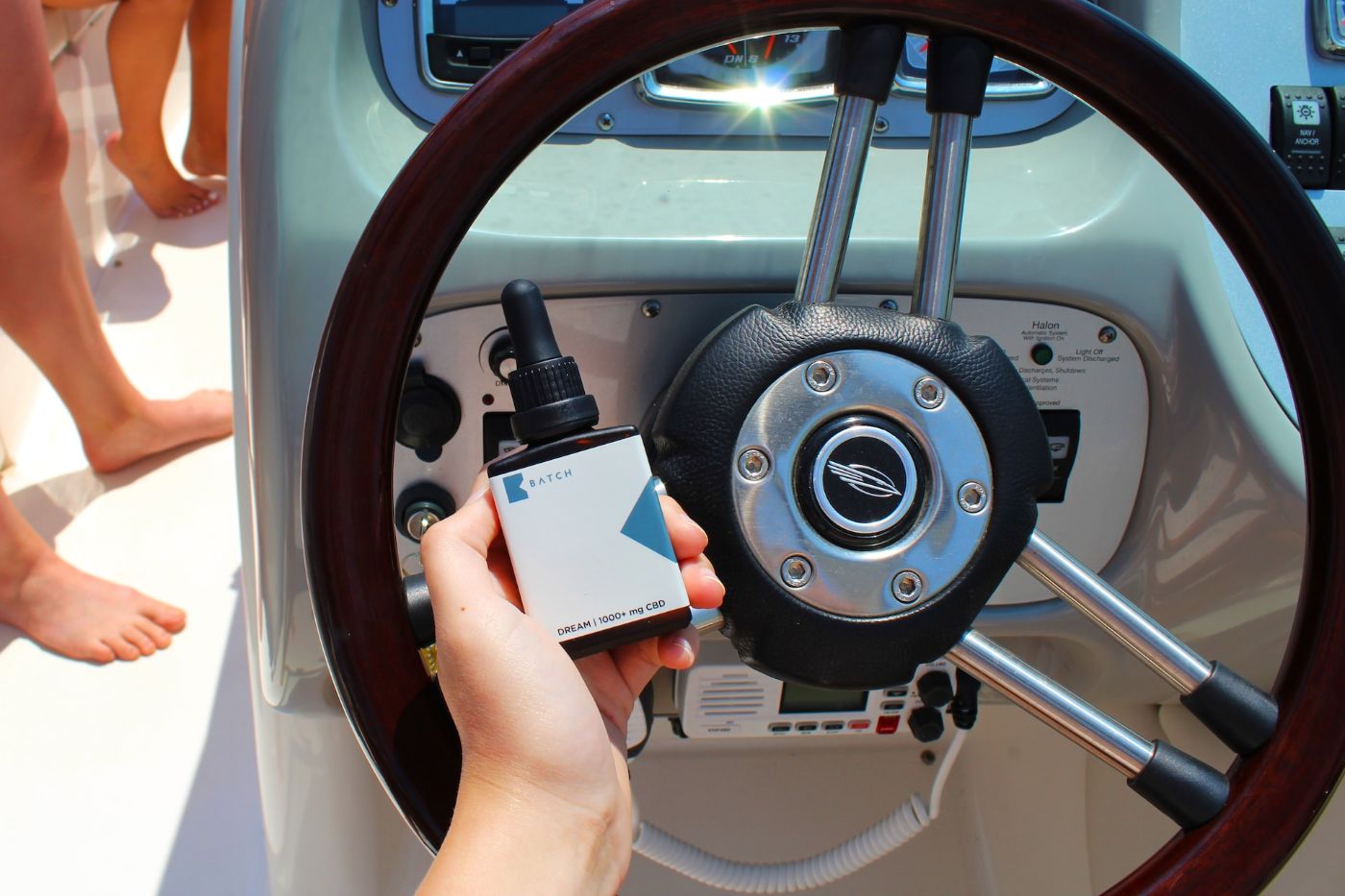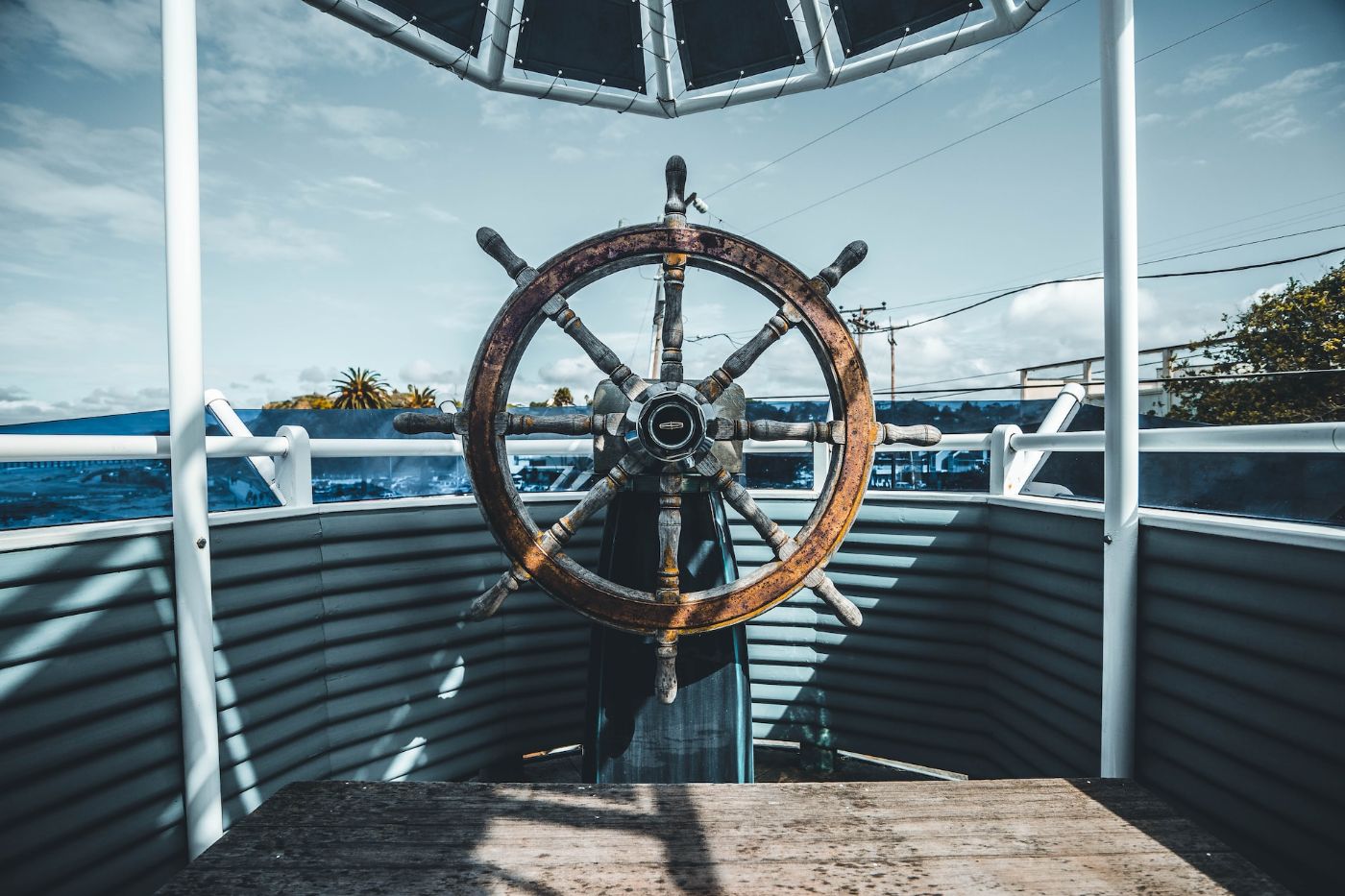What's the Steering Wheel On A Ship Called?
You may have heard different terms used to describe the steering wheel of a ship, but regardless of what you call it, this device is a crucial component that allows the captain to steer any boat and control its course. In this article, we'll explore the different terms used for the steering wheel, as well as its history and function.
The steering wheel on a ship is officially called the helm. It's located on the starboard side, towards the stern, and controls the ship's direction. Another name for the helm is ship wheel; it is more commonly used on larger ships, while smaller boats tend to use the term steering wheel.
There are several components that make up this important part of the ship's navigation system, such as the hub and spindle, which are responsible for transmitting the motion of the wheel to the steering gear, which then controls the rudder. Let's see what other components make up the ship's steering wheel and what their functions are.
Summary
- The steering wheel or helm controls the direction of the vessel using several parts, such as the wheel or tiller, rudder, steering mechanism, and compass.
- The helm is the entire steering mechanism of a ship, while a ship's wheel specifically refers to the circular steering wheel used to control the rudder.
- The evolution of ship steering wheels has been driven by the need to improve efficiency and reduce the physical effort required to operate them.
- The electro-hydraulic system is the most advanced steering mechanism, but it can be more expensive and requires an electrical power source.
- A steering wheel requires less physical effort to operate than tiller steering and provides more precise control over the direction of the ship.

On this page:
Terminologies For A Ship's Steering Wheel
Before diving into this article, you might want to check out some of these common sailing terms to help you understand better:
It can be called the helm
The helm is the official name for the steering wheel on a ship. It is used to control the direction of the vessel and is located on the starboard side towards the stern, operated by the helmsman.
If you need to get more familiar with the different sides/locations on a boat, here's a full guide on sailboat parts.
When you turn the wheel to the left, the rudder moves to the right, causing the ship to turn left. Similarly, when you turn the wheel to the right, the rudder moves to the left, causing the ship to turn right.

However, the helm is not the only way to control the direction of a ship. In some cases, ships may use a joystick or other electronic controls to steer the vessel. The helm consists of several parts, including:
-
Wheel or tiller: This is the part of the helm that the helmsman uses to steer the ship. The wheel is a circular device that is turned to change the direction of the ship, while the tiller is a lever that is pushed to one side or the other.
-
Rudder: The rudder is a flat, vertical surface located at the stern (rear) of the ship. It is attached to the helm and is used to change the direction of the ship by deflecting the water flow.
-
Steering mechanism: The steering mechanism connects the helm to the rudder and allows the helmsman to control the direction of the ship. It can be hydraulic, mechanical, or electric.
-
Compass: The compass is an instrument that indicates the direction of the ship relative to the magnetic north. It is usually mounted on the helm and helps the helmsman maintain a steady course.
It can be plainly called the ship wheel
The ship's wheel is another name for the helm. It's more commonly used on larger ships, while smaller boats tend to use the term steering wheel.
The ship's wheel is usually larger and more ornate than a standard steering wheel, and it's often located on the bridge or wheelhouse of the ship and is used to control the direction of the rudder, which in turn controls the ship's movement.
In addition to its functional purpose, the ship's wheel also has a symbolic significance, as it is often seen as a representation of the captain's authority and responsibility for the safety of the ship and its crew. It is also a symbol of the ship's journey and the challenges that must be overcome in order to reach its destination.
The difference between a helm and a ship's wheel is that the helm refers to the entire steering mechanism of a ship, which includes the steering wheel or tiller, the rudder, and the associated machinery and controls, while a ship's wheel specifically refers to the circular steering wheel that is used to control the rudder.
Steering Wheel Components

In this section, we will discuss the various components of a ship's steering wheel that work together to control the direction of the ship:
Spokes
The spokes of the ship's wheel are the arms that extend from the center hub to the outer rim. They are typically made of wood or brass and provide a firm grip for the captain to turn the wheel.
Rim
The rim of the ship's wheel is the outermost part of the wheel. It is also made of wood or brass and is where the captain places their hands to turn the wheel.
Hub
The hub of the ship's wheel is the central part of the wheel where the spokes meet. It is typically made of brass and is attached to the pedestal.
Pedestal
The pedestal is the support structure that holds the ship's wheel in place. It is usually made of wood and is attached to the deck of the ship.
Spindle
The spindle is a long, cylindrical rod that connects the ship's wheel to the rudder stock. It is typically made of wood and runs through a barrel or drum.
Steering chain
The steering chain is a system of chains or ropes that connect the ship's wheel to the rudder. It is responsible for transferring the captain's steering commands to the rudder.
Tiller lines
The tiller lines are the ropes that connect the steering chain to the rudder stock. They are responsible for moving the rudder left or right in response to the captain's steering commands.
Wooden platform
The wooden platform is the surface on which the ship's wheel is mounted. It is typically made of wood and provides a stable base for the pedestal.
Handles
The handles are the small, brass knobs located on the rim of the ship's wheel. They provide additional grip for the captain when turning the wheel.
Toggle
The toggle is a small brass lever located on the hub of the ship's wheel. It is used to lock the wheel in place when the ship is on a steady course.
Rudder stock
The rudder stock is the vertical shaft that connects the rudder to the ship's hull. It is responsible for moving the rudder left or right in response to the captain's steering commands.
Types Of Steering Wheels
Below are two main types of steering wheels that have been used throughout history, each with their own unique characteristics that evolved over time to meet the changing needs of sailors and shipbuilders.
| Type of Steering Wheel | Subtype | Pros | Cons |
|---|---|---|---|
| Traditional Ship Steering Wheels | Tiller and rudder system | Simple and easy to maintain and repair | Requires a lot of physical strength and effort to operate, especially in rough seas |
Modern Ship Steering Wheels |
Hydraulic System | Requires less physical effort to operate, more precise and responsive | More complex and expensive than traditional systems |
| Electro-Hydraulic System | Highly precise and responsive, easily automated | More complex and expensive than traditional systems, requires electrical power source |
Traditional ship steering wheels
Traditional ship steering wheels are the classic wooden wheels that most people associate with old sailing ships. These wheels were usually made of teak or oak and were often quite large, measuring up to 10 feet in diameter.
They were connected to the ship's rudder via a system of ropes and pulleys, and the helmsman would use the wheel to turn the rudder and steer the ship. The steering mechanism of traditional ship steering wheels was typically mechanical, with the helmsman using brute force to turn the wheel and move the rudder.
This required a lot of physical strength and was quite tiring, especially in rough seas. However, the simplicity of the system made it easy to maintain and repair, which was important in the days before modern technology.

The tiller and rudder system is one of the oldest ship steering mechanisms
In this system, a tiller is attached to the rudder stock, which turns the rudder and changes the direction of the ship. The tiller is usually a long, wooden lever that is connected to the rudder stock via tiller chains or ropes.
While the tiller and rudder system is simple and effective, it does have some limitations. For example, it can be difficult to control the ship in rough seas or high winds. Additionally, the tiller and rudder system requires a lot of physical effort to operate, which can be tiring for the crew.
To counteract, you can use tiller extensions, which are additional pieces that can be attached to the tiller to make it longer or easier to reach. They are used to provide more leverage and control over the tiller, especially in high winds or rough seas. Using tiller extensions is one key to efficiently steering a 420 single-handed.
Modern ship steering wheels
Modern ship steering wheels are typically made of metal and are much smaller than traditional wooden wheels. They are often hydraulically powered, which means that the helmsman can turn the wheel with much less effort than was required with traditional wheels.
Modern ship steering wheels that use a hydraulic system
The hydraulic system is a more advanced ship steering mechanism that uses hydraulic pressure to turn the rudder. In this system, a hydraulic pump is used to create pressure in a hydraulic cylinder, which is connected to the rudder stock. When the pressure is released, the rudder returns to its original position.
One of the main advantages of the hydraulic system is that it requires less physical effort to operate than the tiller and rudder system. Additionally, the hydraulic system is more precise and responsive, making it easier to control the ship in difficult conditions.
Modern ship steering wheels that use electro-hydraulic system
The electro-hydraulic system is a modern ship steering mechanism that combines the best of both worlds. In this system, an electronic control unit (ECU) is used to control the hydraulic pump, which in turn controls the rudder.
The electro-hydraulic system is highly precise and responsive, making it ideal for use in modern ships. Additionally, the system can be easily automated, which reduces the workload for the crew.
Ship Steering Mechanisms
The table below shows the different types of ship steering mechanisms, how they work, and their history.
| Mechanism | How It Works | History |
|---|---|---|
| Tiller steering | A tiller is attached to the rudder and is moved left or right by the helmsman to steer the ship. The tiller is connected to the rudder through a series of ropes or chains. | The tiller was the first mechanical steering mechanism used by the Greeks and Romans. |
| Wheel steering | A wheel is connected to the rudder through a series of wires and hydraulics. The wheel is located on the bridge of the ship and is turned left or right to steer the ship. | The wheel was invented in the early 1700s |
| Joystick steering | A computerized system controls the steering gear. The joystick is located on the bridge of the ship and is used to control the direction of the ship. | Joystick steering was first used in military ships in the mid-20th century |
Tiller steering is the most basic type of steering mechanism
Tiller steering is the oldest and simplest type of steering mechanism used on ships. It involves a tiller that is attached to the rudder. The tiller is a long handle that extends from the top of the rudder and is used to control the direction of the ship.
The tiller is moved left or right by the helmsman to steer the ship. The tiller is connected to the rudder through a series of ropes or chains, which transmit the movement of the tiller to the rudder.
Tiller steering is still used on some smaller boats and sailboats, but it is not commonly used on larger ships due to the physical effort required to operate it.

Wheel steering is most commonly used on modern ships
Wheel steering is the most common type of steering mechanism used on modern ships. It involves a wheel that is connected to the rudder through a series of wires and hydraulics.
The wheel is typically located on the bridge of the ship and is turned left or right to steer the ship. The wheel is connected to a steering gear, which is a series of gears and hydraulic cylinders that transmit the movement of the wheel to the rudder.
The advantage of wheel steering is that it requires less physical effort to operate than tiller steering and provides more precise control over the direction of the ship.
Joystick steering uses computerized sensors to steer
Joystick steering is a more modern type of steering mechanism that uses computerized sensors to control the steering gear. The joystick is typically located on the bridge of the ship and is used to control the direction of the ship.
The joystick is connected to a computer that processes the input from the joystick and sends commands to the steering gear to turn the rudder. The advantage of joystick steering is that it provides very precise control over the direction of the ship, making it ideal for maneuvering in tight spaces or in challenging conditions.
Joystick steering is often used on smaller vessels and in situations where precise control is required.
The Evolution of Ship Steering Design
The earliest ships were steered using a simple oar or a steering board, which was placed over the side of the ship. Later on, the tiller was introduced, which was a long wooden handle that was used to turn the rudder. The tiller remained in use until the introduction of the ship's wheel in the early 1700s, which allowed for more precise and efficient steering.
Over time, ship steering systems became more complex and sophisticated. The introduction of steam power in the 19th century led to the development of hydraulic steering systems, which used pressurized oil to move the rudder.
Today, most ships are equipped with electronic steering systems, which use computer-controlled hydraulic or electric motors to turn the rudder.
Did you find the answer to your specific question?
👍 0 👎 0


Comments
ALADEAN
hank you for this insightful article on ship steering wheels! Your detailed exploration of the different types and their importance really helps enthusiasts and sailors alike appreciate the craftsmanship involved. For those looking to enhance their own vessels, I highly recommend checking out Aladean’s exquisite collection of ship wheels. You can explore their range of beautifully crafted, high-quality wheels at Aladean’s Ship Wheel Collection.
https://aladean.com/collections/ship-wheel-manufacturer-wholesale-supplier
At Aladean, we offer a stunning selection of ship wheels that combine tradition with elegance. Each wheel is meticulously designed to ensure durability and style, making them a perfect choice for both modern and classic boats. Whether you’re looking for a vintage-inspired design or a contemporary piece, Aladean has something to match every sailor’s taste and needs. Visit our collection today and discover how our wheels can elevate your sailing experience!
ALADEAN
Thank you for this insightful article on ship steering wheels! Your detailed exploration truly enhances our appreciation of these vital nautical instruments. For those interested in acquiring high-quality steering wheels, I highly recommend visiting Aladean’s Ship Wheel Collection. Aladean offers a stunning array of ship wheels that combine craftsmanship with elegance, making them perfect for both functional use and decorative purposes. Each piece is carefully designed to bring a touch of maritime charm to any setting. Don’t miss the opportunity to explore these exquisite options and elevate your nautical experience!
https://aladean.com/collections/ship-wheel-manufacturer-wholesale-supplier
Leave a comment